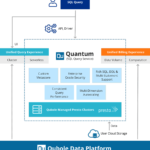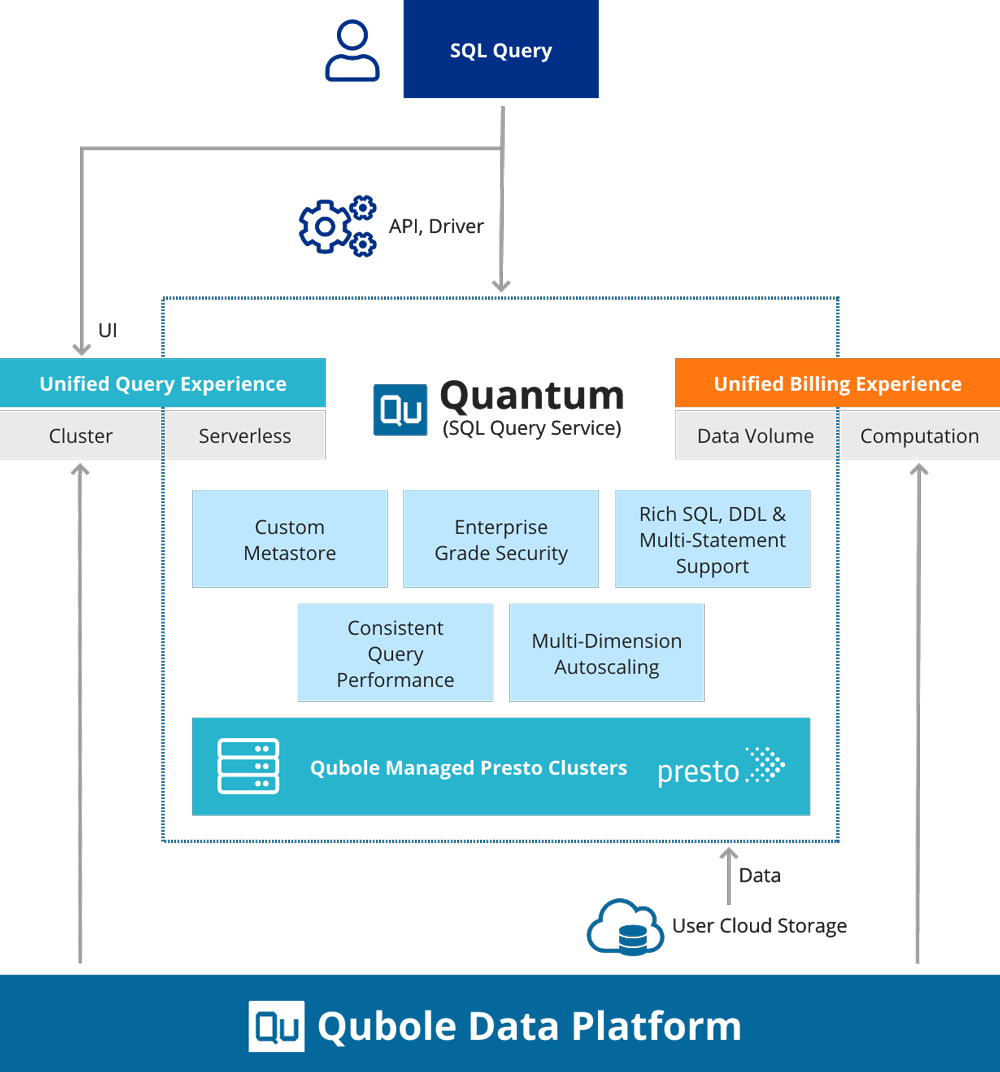Salesforce’s Tableau acquisition is huge, but not the hugest
When you’re talking about 16 billion smackeroos, it’s easy to get lost in the big number. When Salesforce acquired Tableau this morning for $15.7 billion, while it was among the biggest enterprise deals ever, it certainly wasn’t the largest.
There was widespread speculation that when the new tax laws went into effect in 2017, and large tech companies could repatriate large sums of their money stored offshore, we would start to see a wave of M&A activity, and sure enough that’s happened.
As Box CEO Aaron Levie pointed out on Twitter, it also shows that if you can develop a best-of-breed tool that knocks off the existing dominant tool set, you can build a multibillion-dollar company. We have seen this over and over, maybe not $15 billion companies, but substantial companies with multibillion-dollar price tags.
Tableau is a perfect example of best-of-breed winning. 15 years ago the BI market was destined to be owned by incumbents, then simpler, better, more democratized software came along, and a $15B company was built.
— Aaron Levie (@levie) June 10, 2019
Last year alone we saw 10 deals that equaled $87 billion, with the biggest prize going to IBM when it bought Red Hat for a cool $34 billion, but even that wasn’t the biggest enterprise deal we could track down. In fact, we decided to compile a list of the biggest enterprise deals ever, so you could get a sense of where today’s deal fits.
Salesforce buys MuleSoft for $6.5 billion in 2018
At the time, this was the biggest deal Salesforce had ever done — until today. While the company has been highly acquisitive over the years, it had tended to keep the deals fairly compact for the most part, but it wanted MuleSoft to give it access to enterprise data wherever, it lived and it was willing to pay for it.
Microsoft buys GitHub for $7.5 billion in 2018
Not to be outdone by its rival, Microsoft opened its wallet almost exactly a year ago and bought GitHub for a hefty $7.5 billion. There was some hand-wringing in the developer community at the time, but so far, Microsoft has allowed the company to operate as an independent subsidiary.
SAP buys Qualtrics for $8 billion in 2018
SAP swooped in right before Qualtrics was about to IPO and gave it an offer it couldn’t refuse. Qualtrics gave SAP a tool for measuring customer satisfaction, something it had been lacking and was willing to pay big bucks for.
Oracle acquires NetSuite for $9.3 billion in 2016
It wasn’t really a surprise when Oracle acquired NetSuite. It had been an investor and Oracle needed a good SaaS tool at the time, as it was transitioning to the cloud. NetSuite gave it a ready-to-go packaged cloud service with a built-in set of customers it desperately needed.
Salesforce buys Tableau for $15.7 billion in 2019
That brings us to today’s deal. Salesforce swooped in again and paid an enormous sum of money for the Seattle software company, giving it a data visualization tool that would enable customers to create views of data wherever it lives, whether it’s part of Salesforce or not. What’s more, it was a great complement to last year’s MuleSoft acquisition.
Broadcom acquires CA Technologies for $18.9 billion in 2018
A huge deal in dollars from a year of big deals. Broadcom surprised a few people when a chip vendor paid this kind of money for a legacy enterprise software vendor and IT services company. The $18.9 billion represented a 20% premium for shareholders.
Microsoft snags LinkedIn for $26 billion in 2016
This was a company that Salesforce reportedly wanted badly at the time, but Microsoft was able to flex its financial muscles and come away the winner. The big prize was all of that data, and Microsoft has been working to turn that into products ever since.
IBM snares Red Hat for $34 billion in 2018
Near the end of last year, IBM made a huge move, acquiring Red Hat for $34 billion. IBM has been preaching a hybrid cloud approach for a number of years, and buying Red Hat gives it a much more compelling hybrid story.
Dell acquires EMC for $67 billion in 2016
This was the biggest of all, by far surpassing today’s deal. A deal this large was in the news for months as it passed various hurdles on the way to closing. Among the jewels that were included in this deal were VMware and Pivotal, the latter of which has since gone public. After this deal, Dell itself went public again last year.
Powered by WPeMatico
Ubisoft is launching a $15 a month subscription service in September
If you can’t beat ’em, launch your own service. Today at its E3 press event, Ubisoft announced that it will be joining the growing list of companies launching their own streaming service. UPlay+ will be up and running on September 3, priced at a lofty $14.99 a month. Ubisoft is also opening access to preorders this week — and those who get in early will be get the month of September for free.
That price includes access to a library of more than 100 of the publisher’s titles, with more on the way. That includes classics like Prince of Persia, Splinter Cell and Beyond Good & Evil. The list also includes upcoming titles like Watch Dogs: Legion and Ghost Recon Breakpoint, the latter of which will open in beta on September 5, with early access on October 1.
“More players are in the digital ecosystem than ever before, and a digital subscription is one of the easiest ways for players to access content,” Ubisoft VP Brenda Panagross said in a release tied to the news. “With UPlay+, players will have unlimited access to our large catalog of games for the first time.”
Of course, Ubisoft has some stiff competition on its hands, with streaming services from big names like Microsoft, Apple and Sony. The company does have an interesting ally in the battle however, with Google Stadia availability coming next year.
Powered by WPeMatico
Assassin’s Creed Odyssey now offers a way for you to create your own quests
Assassin’s Creed Odyssey was definitely my favorite game of 2018, and it’s getting even better thanks to a couple of new updates Ubisoft announced at E3 this year that help make the most out of the game’s incredibly detailed depiction of a mythically massaged Ancient Greek setting.
Starting today via an open beta, players can get in on one of these new features — Story Creator Mode, which is a web-based way for anyone to design, build and share their own in-game story-based quests. That’s right: You’re the myth-maker now, with a quest-building mechanic that lets players choose from six kinds of quest objectives, including assassination of specific targets; rescuing individuals; visiting different locales throughout the world and more. You can write your own dialog, with branches that respond to player choices, and you can add options for in-dialog lying or even let the player go ahead and attack NPCs to end conversations.
All of these missions, once built, can be shared with other Assassin’s Creed Odyssey players regardless of platform — so if you’re playing on PS4, you can share missions to players on Xbox, for example, and vice versa. This whole feature makes me super excited, because I spent literally months creating campaigns in the original Starcraft’s campaign building tool, and I will do the same thing with this. Hmu if you want my missions.

Meanwhile, players with less interest in creating something new, and more interest in visiting something that already exists to savor the details Ubisoft put in this game, can take advantage of the new Discovery Tour mode that’s coming later this fall. Basically it takes out any conflict elements and adds 300 guided tour stations, which provide details about Ancient Greek life, mythology, architecture and philosophy. The game’s dialog engine does double duty here to offer up interactive quizzes.
I like learning — who doesn’t like learning? This sounds great. But I’ll probably spend more time building campaigns than taking in the sites.
Powered by WPeMatico
It’s 2019 and the Nintendo Wii still isn’t dead
The Nintendo Wii still has some play left in it.
It was already ridiculous that Just Dance 2019 supported the Nintendo Wii, even after axing PS3 support, but now the 2020 version of the dancing video game is still supporting the aged system, Ubisoft said onstage at its E3 press conference.
Just Dance 2020 has some real diversity in its system support. It will be coming to Stadia, Wii, Xbox One, PS4 and Nintendo Switch in November.
The console originally launched in 2006 is far from powerful, but its popularity with an unconventional crowd is bringing it staying power that its successor the Wii U apparently did not have.
At this point, Ubisoft is probably holding onto the title for at least a little bit of notoriety though I’m sure some of those Wii customers that weren’t traditional “gamers” are probably still a solid audience for this quirky title.
Long live the Wii.

Powered by WPeMatico
How gaming on Microsoft xCloud compares to Google Stadia
Cloud gaming is one of the big topics of excitement ahead of E3. The market is very niche but the technology feels exciting, allowing users to play graphically-complex titles on a bunch of low-powered devices thanks to server farms and fast internet connections.
We had a chance to go hands-on with Google’s Stadia platform at GDC and I/O, now at E3, Microsoft is letting the media test out their previously-announced service xCloud. I’ve spent a bit of time with both, so how do they compare?
The biggest difference is that we still know bizarrely little about xCloud, while many expected the service to be the main topic of discussion at the Xbox E3 event, the service was mentioned for mere seconds as execs focused their energies on Xbox Game Pass and the upcoming Project Scarlett hardware.
Pricing, exact release dates, device support and internet requirements of xCloud are all up in air. We know it’s coming later this year for public use just as Stadia is. There are a lot of question marks, but here’s what we were working with in our demo of server-based gaming on xCloud.
Much like Stadia, xCloud is a streaming service that abides by the laws of nature, like speed of light, so latency is a thing. On the topic of lag — which is one of the big viability questions with these platforms — it seems like Microsoft’s solution is in lockstep with Google Stadia. The naked eye can only detect so much especially in a demo environment where the environment is set up to be perfect, but streaming in LA from servers based in the Bay Area didn’t cause any major problems as I demoed a couple titles briefly.
The easiest way to showcase the latency on these systems seems to be picking up an in-game gun and finding the length of time that passes between trigger press and the muzzle flash. It was perceptible and more so than when I’m playing at home but likely only because I was directing all of my attention to that metric. When it came to frame rates flowing and resolution streaming, the brief demos held up, though again this is a tech platform that’s all about having network perfection in place and demo environments are pretty unreliable representations of standard scenarios.
I saw some hiccups in my Stadia demo, though a system restart rectified them. I didn’t have any issues on xCloud though the demo environments were different in each demo.
One big question mark is whether Xbox is going to release a specialized controller that connects to the Cloud directly to cut down on latency. Stadia has already done this, but this won’t make as big a difference to a lot of Xbox One users who likely won’t bother with buying a new controller to shave off a few milliseconds. That said, as you can see, there was some xCloud-specific branding on the Xbox controllers we used, so there could be some developments here.
Stadia requires a 35 Mbps download connection in order to play 4K games, we don’t know anything about the xCloud standards there, but I’d imagine expectations should be kept fairly similar though you might have to worry about both ends of the equation if you’re streaming from your personal Xbox on a home network to a mobile device elsewhere.
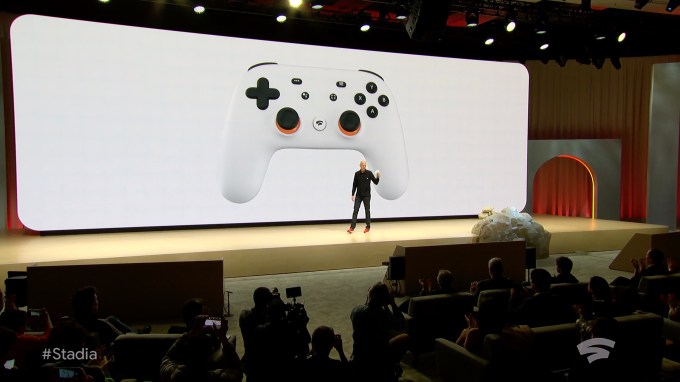
What’s a bit fascinating is how both Microsoft and Google chose to showcase the advances in their streaming technology. While Google showcased Stadia as a console replacement, xCloud’s demo reframed the service as a way to bring console gaming on-the-go.
This isn’t entirely revolutionary as services like Sony’s Remote Play offered some of this functionality, but the scope of support could be larger here. Our demo was on a Samsung Galaxy device attached to an Xbox One controller. We haven’t heard details on the scope of supported mobile devices but given that Stadia is only launching on the Pixel 3 and Pixel 3a, even with the latest Samsung Galaxy devices, Microsoft could already have Google beaten there out-of-the-gate.
I will say it felt different playing a console-level title with a phone screen. You have wildly different expectations of what your phone can handle because you’ve spent years with limited mobile games while open-world RPGs have been out of reach. Mobile processors have gotten more beefy, but pushing graphics that have teraflops of power behind them is a very cool experience though it does make me wish that Microsoft had a mobile system or a controller that was a bit more phone-friendly because the current solution feels more than a little hack-y.
On the topic of value, we know that console streaming for existing console owners will be free, we similarly know that 1080p streaming on Stadia will be free once you buy games on the platform, though if you want 4K resolution, you’ll have to pony up $9.99 per month. We don’t know if xCloud is going to have any limitations on console streaming users.
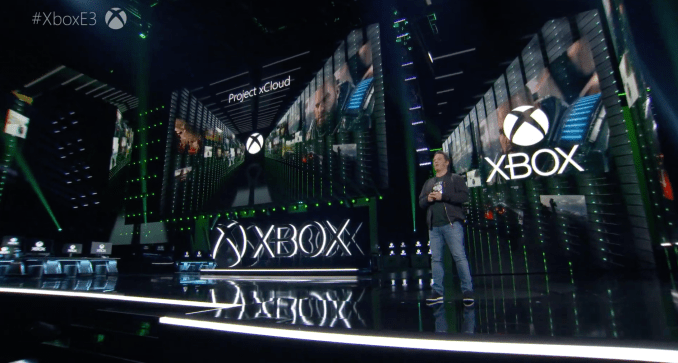
If xCloud boasts support for the full Xbox library, that’s going to be something that keeps Stadia from competing. The network effects of buying single-player titles might be limited but if cross-play for multi-player is something a title doesn’t boast than chances are gamers will want to stay where their friends are. Building an entire player network from scratch won’t be easy for Google and Xbox has one hell of a head-start.
The biggest unanswered question is how Microsoft prices xCloud for gamers without a console and whether there is some too-good-to-refuse combo deal with Xbox Game Pass. The entire market still feels a little niche and I think it’s a bit unrealistic to think we’re already approaching a post-console world, but Microsoft being aggressive here could prevent Stadia from gaining any sort of a foothold.
Powered by WPeMatico
Innoviz extends funding round to $170 million to bring its lidar tech to self-driving cars
Just a few months ago, Innoviz became one of the better capitalized lidar startups when it announced it had raised $132 million in a Series C funding round. But that wouldn’t be the end of it.
The company kept the funding doors propped open and ultimately captured another $38 million from investors. The round has closed at $170 million, Innoviz said Monday.
Initial investors in the Series C round included China Merchants Capital, Shenzhen Capital Group, New Alliance Capital, Israeli institutional investors Harel Insurance Investments and Financial Services and Phoenix Insurance Company. The newest investors, and those responsible for the fresh injection of $38 million, were not named.
The close of the Series C round brings Innoviz’s total funding to $252 million.
The lidar industry is brimming with startups — about 70 according to industry experts — that see an opportunity to sell their tech to companies developing autonomous vehicles. Lidar measures distance using laser light to generate highly accurate 3D maps of the world around the car. It’s considered by most in the self-driving car industry a key piece of technology required to safely deploy robotaxis and other autonomous vehicles.
Innoviz is aiming for this very space with its solid-state lidar sensors and perception software for autonomous vehicles. The company contends that solid-state lidar technology is more reliable over time because of the lack of moving parts.
Innoviz says that its perception software is what helps it stand out in a sea of lidar startups. The perception software identifies, classifies, segments and tracks objects to give autonomous vehicles a better understanding of the 3D driving scene.
The company plans to use the funding, in part, to further develop the perception software piece. That includes bringing on two computer vision experts, Dr. Raja Giryes and Or Shimshi, as “strategic collaborators.”
The funding will also be used to help Innoviz scale up and eventually mass produce its products. Its automotive-grade lidar product called InnovizOne is entering series production in 2021 for global automakers. The company has an existing solid-state lidar (InnovizPro) that is available now.
Innoviz’s strategy has been to partner with a number of OEMs and Tier 1 suppliers, such as Magna, HARMAN, HiRain Technologies and Aptiv, and to package perception software with its lidar sensors and offer it as a complete unit for companies developing autonomous vehicle technology.
Innoviz has locked in several key customers, notably BMW. The automaker picked Innoviz’s tech for series production of autonomous vehicles starting in 2021.
Powered by WPeMatico
Daily Crunch: Salesforce is buying Tableau
The Daily Crunch is TechCrunch’s roundup of our biggest and most important stories. If you’d like to get this delivered to your inbox every day at around 9am Pacific, you can subscribe here.
1. Salesforce is buying data visualization company Tableau for $15.7B in all-stock deal
This is a huge deal for Salesforce as the company continues to diversify beyond CRM software and into deeper layers of analytics.
Salesforce reportedly worked hard to buy LinkedIn (which Microsoft ultimately picked up instead). And while there isn’t a whole lot in common between LinkedIn and Tableau, this deal should help the company extend its engagement with existing customers.
2. Maker Faire halts operations and lays off all staff
Financial troubles have forced Maker Media, the company behind crafting publication MAKE: magazine as well as the science and art festival Maker Faire, to lay off its entire staff of 22 and pause all operations.
3. Google Assistant comes to Waze navigation app
Google Assistant in Waze will provide access to your usual Assistant features, like playback of music and podcasts, but it’ll also offer access to many Waze-specific abilities, including letting you ask it to report traffic conditions, or specifying that you want to avoid tolls when routing to your destination.
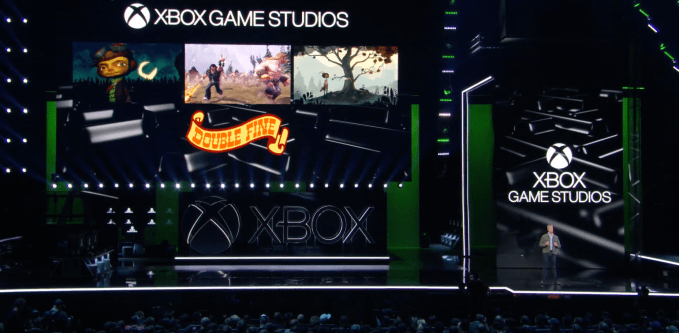
4. Microsoft acquires Psychonauts-maker Double Fine Productions
In addition to making Psychonauts, Double Fine notably raised around $3 million in a Kickstarter campaign to create the adventure game it eventually titled Broken Age. As is the case with past Microsoft studio acquisitions, it sounds like Double Fine will continue to operate externally, underneath the Xbox Game Studios umbrella.
5. Former Unity Technology VP files lawsuit alleging CEO sexually harassed her
In a statement to TechCrunch, a Unity spokesperson said the allegations are not true and that it intends to “vigorously defend against the false allegations.”
6. Economic development organizations: good or bad for entrepreneurial activity?
In developing VC markets such as the Midwest, some may think that funding from the government or economic development organizations are a godsend — but entrepreneurs need to ensure that this money isn’t a double-edged sword. (Extra Crunch membership required.)
7. This week’s TechCrunch podcasts
The Equity team has some thoughts on SoftBank’s Vision Fund, and what its difficulties raising more money mean for the late-stage investment landscape. Meanwhile, Original Content reviews Netflix’s “Always Be My Maybe,” and we also have a bonus interview with the director of “I Am Mother.”
Powered by WPeMatico
Galaxy Fold launch date will be announced in ‘coming weeks’
May has come and gone, and we’re nearly halfway done with June. All we seem to really know about the Galaxy Fold, on the other hand, is that it’s still coming…at some point. In a comment earlier today, Samsung promised a launch date for the delayed foldable “in the coming weeks.” It’s a familiar refrain at this point, of course.
Initially planned for an April 26 launch, the hardware giant hit pause on the device after multiple problems were reported among a small batch of review units. Samsung initially placed the blame for display problems on reviews, but ultimately announced it was going back to the drawing board.
A month and a half after the promised launched, we’re still no closer to knowing the new date. It’s not a great look for Samsung, but it’s a hell of a lot better than subjecting the product to a pair of recalls à la the Galaxy Note. It’s a new category based around a new technology, so one ultimately can’t blame Samsung for being cautious here. Of course, the case could certainly be made that these sort of precautions would have been better to take prior to putting these out in the wild, but here we are.
Reviewers aren’t supposed to serve as beta testers, but the company is probably better off getting these issues out of the way before wider release.
Powered by WPeMatico
What top VCs look for in women’s fertility startups
A number of promising women’s health tech companies have popped up in the last few years, from fertility apps to ovulation bracelets — even Apple has jumped into the subject with the addition of period tracking built into the latest edition of the watch. But there hasn’t been much in the way of innovation in women’s sexual health for decades.
In-vitro fertilization (IVF) is now a 40-year-old invention and even the top pharmaceutical companies have spent a pittance on research and development. Subjects like polycystic ovarian syndrome, endometriosis and menopause have taken a backseat to other, more fatal concerns. Fertility is itself oftentimes a mysterious black box as well, though a full 10% of the female population in the United States has difficulty getting or staying pregnant.
That’s all starting to change as startups are now bringing in millions in venture capital to gather and treat women’s health. While it’s early days (no unicorns just yet) interest in the subject has been jumping steadily higher each year.
To shine a better light on the importance of tech’s role in spurring more innovation for women’s fertility, we asked five VCs passionate about the space for their investment strategies, including Sarah Cone (Social Impact Capital), Vanessa Larco (NEA), Anu Duggal (Female Founders Fund), Jess Lee (Sequoia) and Nancy Brown (Oak HC/FT).
Sarah Cone, Social Impact Capital

Sarah Cone, Social Impact Capital
We’re interested in companies that create large data sets in women’s health and fertility, enabling personalized medicine, clinical trial virtualization, better patient outcomes, and the application of modern AI/ML techniques to generate hypotheses that discover new targets and molecules.
Powered by WPeMatico
Qubole launches Quantum, its serverless database engine
Qubole, the data platform founded by Apache Hive creator and former head of Facebook’s Data Infrastructure team Ashish Thusoo, today announced the launch of Quantum, its first serverless offering.
Qubole may not necessarily be a household name, but its customers include the likes of Autodesk, Comcast, Lyft, Nextdoor and Zillow . For these users, Qubole has long offered a self-service platform that allowed their data scientists and engineers to build their AI, machine learning and analytics workflows on the public cloud of their choice. The platform sits on top of open-source technologies like Apache Spark, Presto and Kafka, for example.
Typically, enterprises have to provision a considerable amount of resources to give these platforms the resources they need. These resources often go unused and the infrastructure can quickly become complex.
Qubole already abstracts most of this away, offering what is essentially a serverless platform. With Quantum, however, it is going a step further by launching a high-performance serverless SQL engine that allows users to query petabytes of data with nothing else but ANSI-SQL, giving them the choice between using a Presto cluster or a serverless SQL engine to run their queries, for example.
The data can be stored on AWS and users won’t have to set up a second data lake or move their data to another platform to use the SQL engine. Quantum automatically scales up or down as needed, of course, and users can still work with the same metastore for their data, no matter whether they choose the clustered or serverless option. Indeed, Quantum is essentially just another SQL engine without Qubole’s overall suite of engines.
Typically, Qubole charges enterprises by compute minutes. When using Quantum, the company uses the same metric, but enterprises pay for the execution time of the query. “So instead of the Qubole compute units being associated with the number of minutes the cluster was up and running, it is associated with the Qubole compute units consumed by that particular query or that particular workload, which is even more fine-grained,” Thusoo explained. “This works really well when you have to do interactive workloads.”
Thusoo notes that Quantum is targeted at analysts who often need to perform interactive queries on data stored in object stores. Qubole integrates with services like Tableau and Looker (which Google is now in the process of acquiring). “They suddenly get access to very elastic compute capacity, but they are able to come through a very familiar user interface,” Thusoo noted.
Powered by WPeMatico





